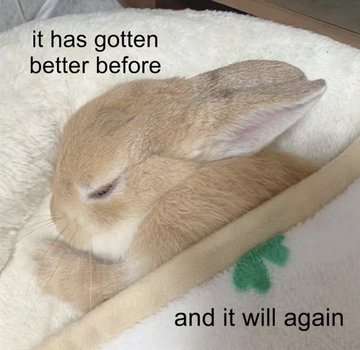

I’ve only ever played wolfenstein et


I’ve only ever played wolfenstein et


Here’s a project that’s similar:


Himejoshi is the usual term for female fans of yuri, himejoshi is becoming more common (in my western yuri circles).


I genuniely don’t think that most americans understand the point of a drill. To them, drills are just something you do.


I really dislike the term “corporate greed”. It attributes agency and malice to an nonhuman machine doing what it’s designed to do.


Everyone has a giant space laser, why don’t you try that?


Sounds like you’re getting the hang of it!


You may want to consider shutting down some of your small industries (hotels) and redirect the workers to something more profitable (refining or clothes). Farms are inexpensive to run but can lower the cost of running food/alcohol factories to the point they become profitable as neither industry on its own is particularly profitable. I did imported crops to supplement my own crop production for a food factory, but I did the math and it ended up being cheaper to import food, sell the crops, and run a mine instead.
It’s really odd that you’re importing that many chemicals. Chemical industries are not especially profitable afaik, and the infrastructure is pretty servere. I tend to avoid chemicals until my repiblic is already producing most of the required materials in house.
You should really get an industrialized farm set up if your map allows it. For your current stage in the game, I’d suggest you stick with only solid fertilizer. You wouldn’t get much use out of that many crops and crops aren’t worth much. Farming basically requires a rail network, so make sure that’s planned for. A local farm also cuts down on transport costs (number of trucks & fuel) because it can be closer.
Make sure to not over diversify. Stick with 1-2 main export industries until you have the population/wealth to give you a buffer for unforseen circumstances. Most industries benefit from significant investment; top end industries need infrastructure to maximize their output and bottom industries need extremely large export bandwidth. Especially on realistic difficulty, I find giving yourself leeway and room to make mistakes is vital for alleviating the difficulty. The more extra storage facilities and cash you have on hand directly relates to your ability to make mistakes and experiment.
When possible, you should buy the best vehicles you can. They aren’t that expensive but generally save money in the long run.
Related, but big workplaces tend to have less overhead than small ones because you can use bigger busses, need fewer power lines, and so on. That makes them ideal for early game when every single building is a significant cost.


For things like fire, police, and other civil services all of the housing doesn’t need to be in walking distance. An effective pattern is to place blocks of residential and civil services between those blocks. The blocks themselves don’t need to be too large. I would suggest that everything should be accessible by one set of utility distribution buildings (substations, sewedge tanks, ect). The only thing that matters is that there are enough people within walking distance, not that it’s accessible to everyone. Once you have blocks like this, it becomes much easier to scale. Expanding the number of citizens becomes as east as plopping down another block.
It also sounds like you aren’t very profitable. What are your core industries? It is worth noting that 4k people take only marginally more infrastructure than 3k, and so the vast majority of the increase in citizens will work in your money producing factories.
Feel free to ask me (or dm me) any questions any time. I’ve spent a lot of time playing realistic mode. I can outline how trains work if you’d need.
This movie was quite good! I saw it in a theater and everyone seemed to enjoy it as well.


My wife likes chili crisp so that’s what we keep around.


Lao gan ma, easiest answer of my life


Chinese family style is one of my favorite ways to prep food. I love your plates!


I didn’t realize the hardware locks you to a software suite, that’s generally a dealbreaker unless you already use that software for everything. The conspiratorial comment seems quite likely to me. It really seemed like they were putting a lot of weight behind the project and then just dropped it.


How do you feel about stuff like google coral?


Only cool cybertruck


I guess I have dinner plans now! Thanks


I’m only aware of having a really strong thing for someone’s scent or body odor (both my wife and I). I don’t see why it’d ever be wrong to have a fetish that isn’t harming anyone else. So long as it doesn’t result in sexual harasment or harm of other people, it’s usually totally cool and something you should keep enjoying. It’s a good thing, even.
https://existentialcomics.com/comic/1